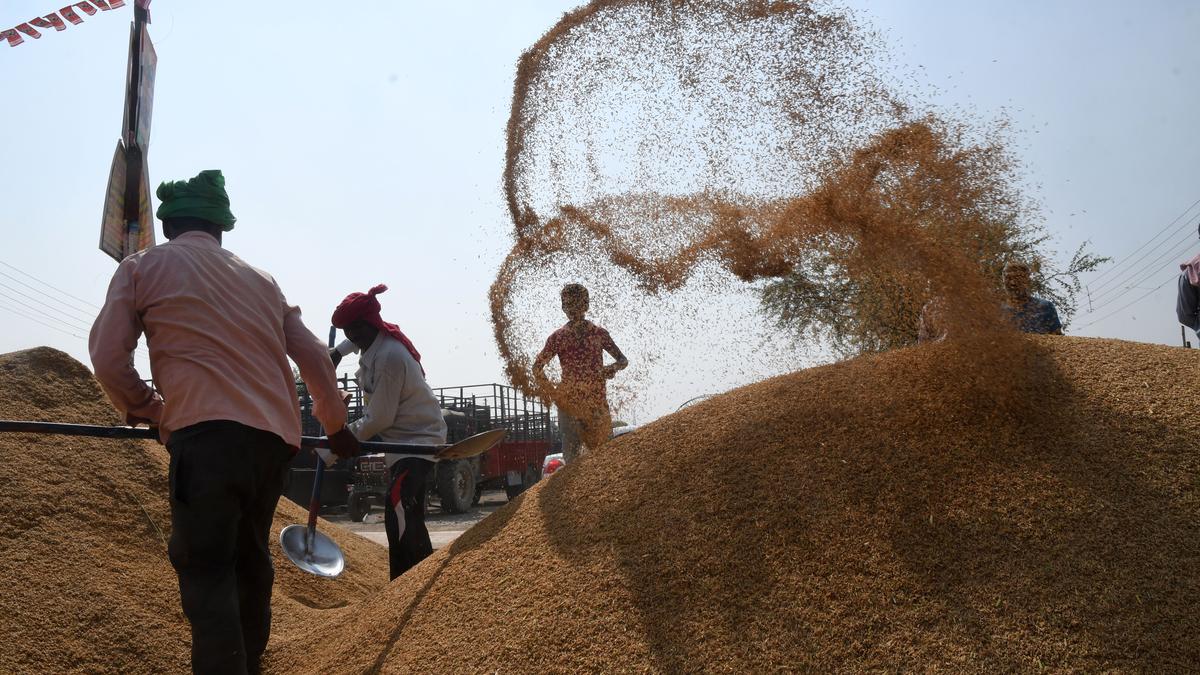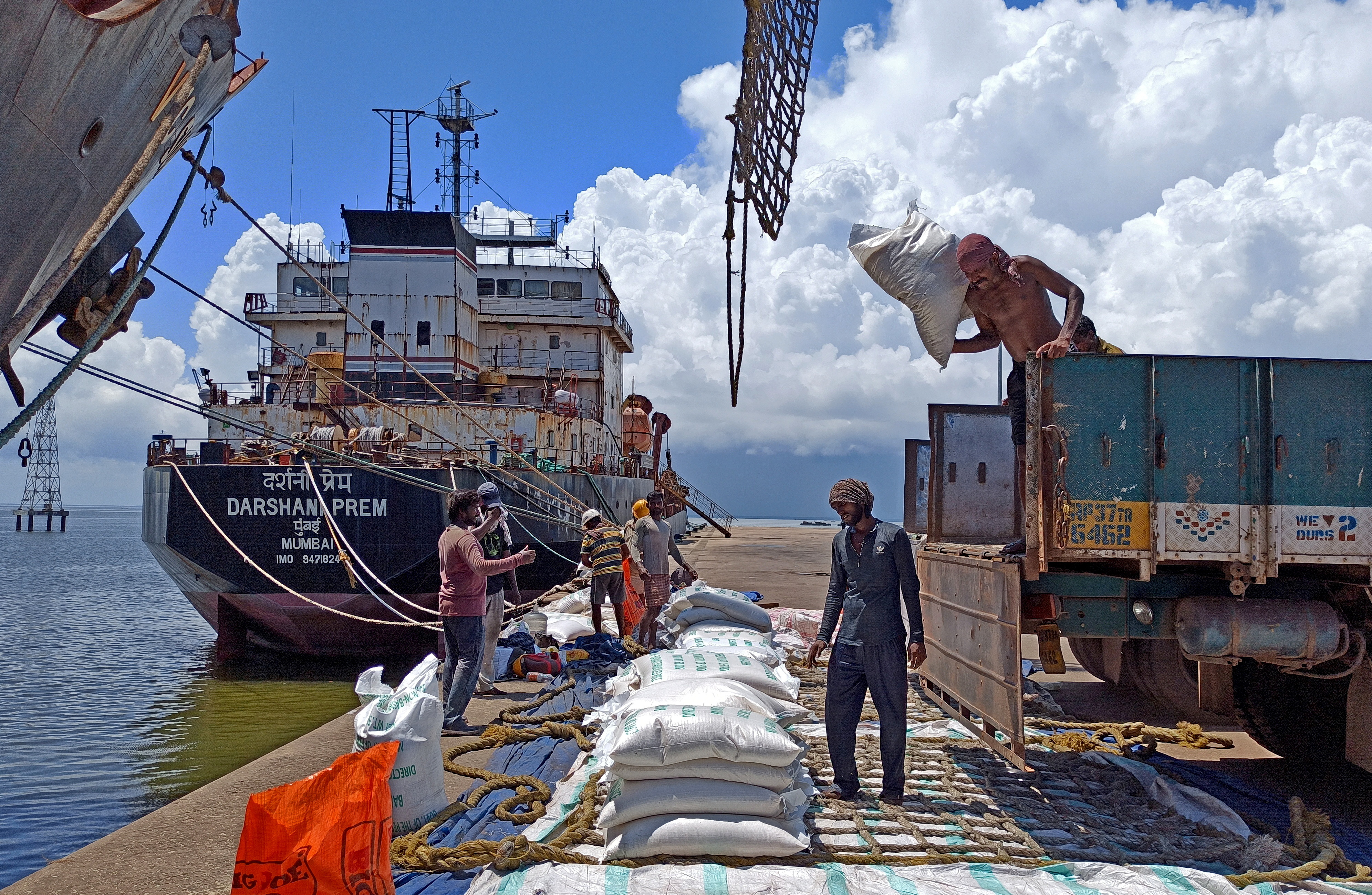Government Imposes 20% Export Duty on Parboiled Rice: Implications and Reactions

Government Imposes 20% Export Duty on Parboiled Rice: Implications and Reactions
After banning the shipment of non-basmati white rice last month, the government has now added a 20% export charge to parboiled rice in an effort to lower costs and boost domestic supply.

The export tariff is set to take effect right away, according to a statement from the finance ministry issued late on Friday.
On July 21, 2023, the government announced a restriction on the export of non-basmati white rice but said that it would only be permissible if it served the nations’ requests and met their needs for food security.
On July 21, 2023, the government announced a restriction on the export of non-basmati white rice but said that it would only be permissible if it served the nations’ requests and met their needs for food security.
With a 40% share of the world’s rice trade, India has been the greatest rice exporter for the past ten years. During the previous fiscal year, the nation exported 7 million tonne (MT) of parboiled rice while shipping a record 22.33 MT of rice overall.
According to trade insiders, the government will probably declare a minimum export price for shipments of high-value Basmati rice. 4.55 MT of fragrant rice was exported from India in FY23. In an effort to increase domestic supply, India banned the export of broken rice in September 2017 and levied a 20% export levy on non-basmati and non-parboiled rice.

Retail rice prices increased by 12.96% in July after beginning the year with double-digit increases. In order to lower costs, the Food Corporation of India plans to sell 2.5 MT of extra rice this year in the open market.
The transplanting of paddy is currently risen 4.4% year over year (y-o-y) and is practically finished. Approximately 96% of the typical seeded area, or 38.4 million hectares, have had rice transplanted thus far. India implemented a broken rice export ban and a 20% export duty on non-basmati and non-parboiled rice in September of last year in an effort to boost domestic supply.
Retail rice prices increased by 12.96% in July after increasing by double digits all year. The Food Corporation of India hopes to lower prices this year by selling 2.5 MT of rice from its excess stock on the open market.
Currently, paddy transplanting is increasing 4.4% year over year (y-o-y) and is practically finished. On 38.4 million hectares, or almost 96% of the usual seeded area, rice has been transplanted thus far.
Experts warned that flooding in some parts of Punjab and a delay in sowing in the eastern provinces due to the monsoon’s tardy arrival might have an impact on kharif paddy, which accounts for 80% of the nation’s rice production.
80% of all rice exports are made up of non-basmati rice. Although the export markets are fairly diverse, Bangladesh, China, Nepal, Iran, and the majority of African nations are the primary customers.

In the first three months of the current fiscal year, India has exported 4.05 MT of non-basmati rice, a decrease of 6.6% from the same time the previous fiscal. In FY23, India exported a record 17.78 MT of non-basmati rice at a record $ 6.35 billion.
Since 2012, India has become the top rice exporter in the world. India now exports more rice than the next three largest exporters combined—Thailand, Vietnam, and Pakistan.
India sends rice to over 100 nations. The neighbourhood, including Nepal and Bangladesh, the African nations of Madagascar, Benin, Kenya, and the Ivory Coast, as well as several Asian nations like the United Arab Emirates, Indonesia, and Malaysia, would feel the effects of a number of steps implemented to restrict rice exports from India the most.
The United States Department of Agriculture (USDA) predicted that India’s rice exports, which reached a record shipment of more than 22 MT in FY23, might fall to 19 MT in the calendar year 2024. However, this evaluation was made after the government last month put a restriction on the export of white rice.
In a move that has garnered mixed reactions from industry stakeholders, the government recently imposed a 20% export duty on parboiled rice exports. The decision was made in a bid to control domestic prices and ensure food security, but it has caused concern among exporters who fear a drop in competitiveness on the global market. This article delves into the rationale behind the decision, its immediate impact, and its broader implications for the domestic and international rice market.

Parboiled rice is an important commodity, both in terms of domestic consumption and export potential. This type of rice undergoes a unique processing method where it is partially boiled in the husk, providing a higher nutritional content and a longer shelf life. It is a staple food in many countries and has been an essential export product, contributing significantly to the country’s foreign exchange earnings.
One of the main concerns prompting this move is to ensure domestic food security by increasing the availability of rice in the local markets.Fluctuating prices have affected the domestic market in recent times, prompting the government to take steps to stabilize them.
The move aims to improve revenues for local rice producers who compete against cheap imports in the domestic market.
By curbing exports, the government aims to moderate foreign exchange outflows, potentially stabilizing the domestic currency.
Preliminary data has already shown a noticeable decrease in export figures for parboiled rice.Domestic prices have slightly stabilized since the imposition of the export duty, benefiting consumers.Exporters and trade bodies have expressed concern over the tax, fearing loss of global market share.

The impact on farmers is still ambiguous. While the move aims to help them in the long term, short-term earnings could be impacted due to a glut in supply.
A better-controlled price environment could have implications for the nation’s inflationary trends.
The reduced supply from one of the world’s major exporters could cause global rice prices to rise.Other rice-exporting nations might capitalize on the new export duty to grab a larger market share.This could also have political implications, potentially affecting trade relations with countries that depend on these rice exports.
The trade bodies representing exporters have called for a repeal of the export duty, arguing that it will harm the industry’s competitiveness.While pleased with domestic price stabilization, some consumer groups argue that the benefits may be short-lived.
Some economists caution that while the export duty could bring short-term relief, it may discourage farmers from producing parboiled rice in the future, leading to a potential long-term shortage.

The government’s decision to impose a 20% export duty on parboiled rice has immediate and far-reaching implications. While aimed at stabilizing domestic prices and ensuring food security, the move has led to concerns about the long-term viability and competitiveness of the parboiled rice industry.
As the situation continues to evolve, all eyes will be on the government’s next steps, whether it be an adjustment or revocation of the duty, or additional measures to safeguard both local producers and the export market.




